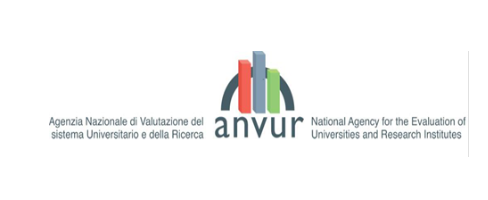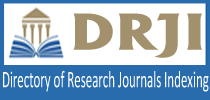THE FIRST AND SECOND DEMOGRAPHIC DIVIDENDS IN MOLDOVA
DOI:
https://doi.org/10.36004/nier.es.2022.2-02Keywords:
economic life-cycle, first demographic dividend, second demographic dividendAbstract
Moldova is going through a phase of intense demographic changes and is facing two major challenges: population decline and ageing, which significantly influence economic growth opportunities. The economic burden increase on the working-age population is one of the main concerns associated with demographic ageing. In this context, studying the impact of demographic changes on economic dynamics is of interest to academia and policymakers. Relatively new theoretical approaches −the first and the second demographic dividend concepts and the "economic life cycle" theory were used. The papers of foreign and domestic scientists acted as the theoretical information base of the study.
This article presents the results of a study evaluating the demographic dividend for Moldova based on National Transfer Accounts and the demographic forecast for 2022-2040. The scientific papers of foreign and Moldovan researchers were used as the theoretical and informational basis for this study. To determine the demographic dividends, the methodology proposed by Mason and Lee was used; the calculations of demographic coefficients, the assessment of the age structure and its dynamics, and the formation of demographic dividends were carried out. The results of the study showed that Moldova still needs to catch the first demographic dividend. In the next two decades, the number of producers will decrease faster than the number of consumers. Favourable market changes in the demographic structure are practically exhausted, and Moldova is entering a period of depopulation. The evolution of the demographic dividend in Moldova is in line with regional trends. However, with an active policy to increase the population's economic activity and improve living standards, there is an opportunity to reap the benefits created by the second demographic dividend. In addition, it is necessary to diversify the investment opportunities for savings, which would contribute to the accumulation of assets and indirectly increase the fixed capital.
Downloads
References
Ando, A., & Modigliani, F. (1963). The "Life Cycle" Hypothesis of Saving: Aggregate Implications and Tests. American Economic Review 53(1), 55–84.
Barsukov V. N. (2019). From the demographic dividend to population ageing: world trends in the systemwide transition. Economic and Social Changes: Facts, Trends, Forecast, 12(4), 167–182. DOI: https://doi.org/10.15838/esc.2019.4.64.11. (In Russian).
Gagauz, O. (2020). Quo vadis? Declinul populației care nu poate fi stopat. Revista de Filozofie, Sociologie şi Ştiinţe Politice, 3(184), 87-100. https://icjp.asm.md/sites/default/files/publicatii/revista_filosofie_nr_3_184_2020.pdf.
Gagauz, O., Buciuceanu-Vrabie, M., Pahomii, I., Ștîrba, V., Tabac, T., & Grigoraș, E. (2021). Populația Republicii Moldova la 30 de ani de independență: provocări principale și politici necesare. INCE, CCD. DOI: https://doi.org/10.36004/nier.ccd.2021.978-9975-89-248-3
Gagauz O. E., & Prohnițchi V. (2022). National transfer accounts of Moldova 2019: principals of construction and some results. Demographic Review 9(2), 65-80. DOI: https://doi.org/10.17323/demreview.v9i2.16206. (In Russian)
Gagauz, O., & Tabac, T. (2017). Cum corelăm dezvoltarea economică cu cea demografică sau ce este dividendul demografic? Barometrul demographic. http://ccd.ucoz.com/_ld/0/53_Barometru_rom.pdf
Lee, R., & Mason, A. (2006). What Is the Demographic Dividend? Finance and Development, 43(3). https://www.imf.org/external/pubs/ft/fandd/2006/09/basics.htm
Lupușor, A., Popa, A., & Prohnițchi., V. (2017). Demography matters: How population dynamics impacts the economy of the Republic of Moldova? UNFPA, Expert-Grup. https://moldova.unfpa.org/en/publications/demography-matters-how-population-dynamics-impacts-economy-republic-moldova-0
Mason, A. (2005). Demographic transition and demographic dividends in developed and developing countries. https://www.researchgate.net/publication/252403184_Demographic_Transition_and_Demographic_Dividends_in_Developed_and_Developing_Countries
Mason, A., Lee, R., Abrigo, M., & Lee, S. (2017). Support Ratios and Demographic Dividends: Estimates for the World. Technical Paper, 1. United Nations. https://www.un.org/en/development/desa/population/publications/pdf/technical/TP2017-
NBM (2022). National Bank of Moldova August. Presentation of the Inflation Report No.3. https://www.bnm.md/en/content/video-presentation-inflation-report-no-3-august-2022
Ogawa, N., Mansor, N., Lee, S., Abrigo, M., & Aris, T. (2021). Population Aging and the Three Demographic Dividends in Asia. Asian Development Review, 38(1), 32-67. https://doi.org/10.1162/adev_a_00157
UN (2013). United Nations. National Transfer Accounts Manual: Measuring and Analysing the Generational Economy. https://ntaccounts.org/doc/repository/NTA%20manual%202013.pdf















